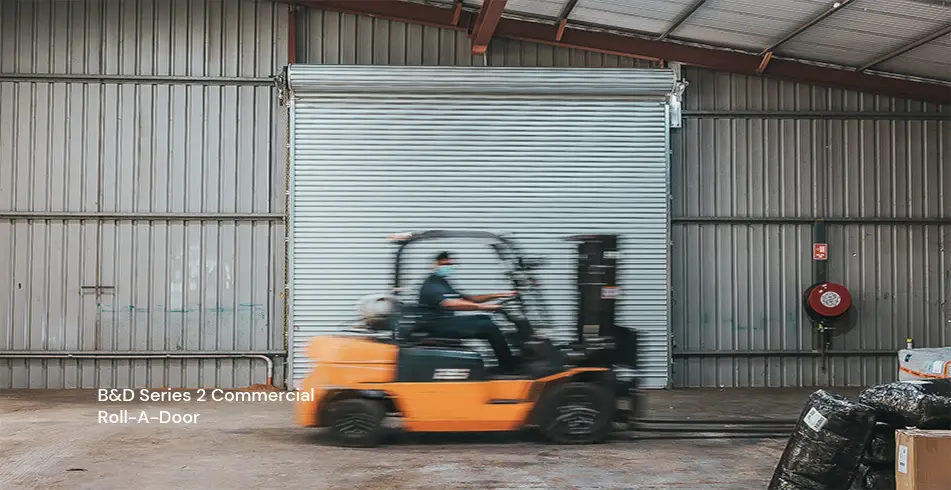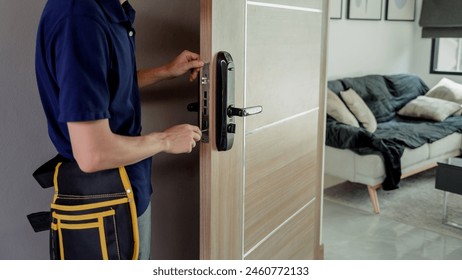What Makes Sectional Industrial Doors Unique
These aren’t your grandfather’s garage doors. Today’s models combine military-grade materials with tech-forward features.
Built Like Tanks
Using steel thick enough to stop a forklift (16-gauge for heavy-duty, 24-gauge for lighter needs), panels interlock like puzzle pieces. The 2-inch thickness isn’t just for show, it houses insulation that outperforms many office buildings’ walls. Polystyrene cores hit R-7.35 ratings, while pricier polyurethane options reach R-18, equivalent to wrapping your facility in a winter parka 1.
 Weather Wars
Weather Wars
I once watched a Kansas City warehouse door take a direct hit from flying debris during a tornado. The stucco-embossed steel panels survived unscathed, thanks to 12-gauge tracks and ball-bearing rollers. Dual seals along the bottom and sides create an airtight lock against snow, dust, and even chemical fumes 23.

2025’s Top Performers: Doors That Earn Their Keep
After testing 12 brands, three models stand out:
Speed Demon: Cornell Iron’s Extreme Series
Perfect for Amazon-style distribution centers, this door opens three times faster than standard models. Its light curtain sensors (imagine laser tripwires) prevent accidents with forklifts. The full-view windows eliminated 30% of unnecessary door cycles at a Michigan auto plant by letting workers peek inside before entering 4.
The Insulation King: Raynor EnergyCore
Used in Alaska’s -40°F freezer farms, its polyurethane core and galvanized steel shrug off both frost and corrosion. Facility managers report HVAC savings covering the door’s cost in under four years 5.The Customizer’s Dream: Wayne Dalton Sectional Steel
When a brewery needed doors matching their art-deco façade, Dalton delivered aluminum panels with stained-glass style windows. The same durability as plain steel, but with Instagram-worthy looks 6.
Heavy-Duty vs Standard: When to Invest
A concrete plant learned this the hard way. Their “budget” 24-gauge door warped within a year from cement dust abrasion. Upgrading to 16-gauge steel with 3-inch tracks solved it but cost 40% more.
Heavy-duty models justify their price by:
Handling 50+ daily cycles vs 10-15 for standard doors
Reducing air leaks by up to 70% via tighter seals 3
Offering movable center posts for oversize machinery

Cost Breakdown: Where Your Money Goes
At a Texas equipment dealership, installing five 20’x25’ doors ran $112,000. Here’s why:
Materials (60% of cost): Insulated steel averages $15-$25/sq.ft. Add $3-$7/sq.ft for windows or custom colors.
Labor (30%): Complex jobs (like retrofitting a 1940s aircraft hangar) can hit $300/hour for crane crews.
Hidden Savings: Those Texas doors cut winter heating bills by $1,800/month, paying for themselves in 3 years 85.

Installation: Why Pros Matter
A botched DIY install I repaired had tracks misaligned by 1/4”. The door was chewed through $900 in rollers in six months. Proper setup requires:
Laser-Leveled Tracks: Even a pencil-width tilt causes premature wear
Spring Science: Torsion springs must be calibrated to the exact door weight
Smart Tech Integration: Linking door sensors to building automation systems

5 Maintenance Hacks That Prevent Disasters
Lubricate Like Clockwork: Every 90 days, hit rollers and hinges with silicone spray (not WD-40 as it attracts gunk).
Winterize Seals: Apply glycerin to rubber seals monthly to prevent ice-jamming.
Listen for Trouble: A grinding noise usually means track debris; screeching points to dry rollers.
Test Safety Eyes Monthly: Wave a broomstick while closing but if it doesn’t reverse instantly, call a pro.
Storm Prep: Pre-apply corrosion inhibitor before salt-heavy winters or coastal storms.

Safety: Beyond Compliance
OSHA’s rules are just the start. Smart facilities add:
- Dual Sensors: Infrared + pressure edges catch falling tools or workers
- Manual Overrides: Keyed releases every 50 feet for power outages
- Fire Ratings: 90-minute fire doors in chemical storage zones
The Tech Revolution
The doors I install now are smarter than my first truck. One client’s system texts them if a door cycles 10+ times/hour (indicating a security breach). Others use:
AI-Powered Predictive Maintenance: Algorithms analyze motor sounds to schedule repairs before breakdowns
Solar-Powered Openers: With battery backups for blackouts
Drone Inspection Ports: Small hatches letting UAVs check roof sections without human climbs

The Bottom Line
A top-tier sectional industrial door is like a star employee… it works 24/7, saves money, and protects your team. But just like hiring, you get what you vet for. So before buying:
- Pressure-test insulation claims with a thermal camera
- Demand third-party safety certifications
- Check service response times. A 2-hour outage can cost $10k+
Ready to upgrade? Start with a 30-minute facility audit. Most suppliers do these free, and you’ll leave knowing exactly how big a dent these doors can put in your operating costs.
